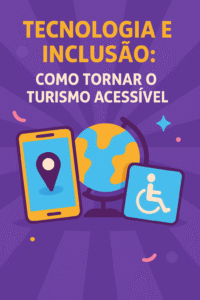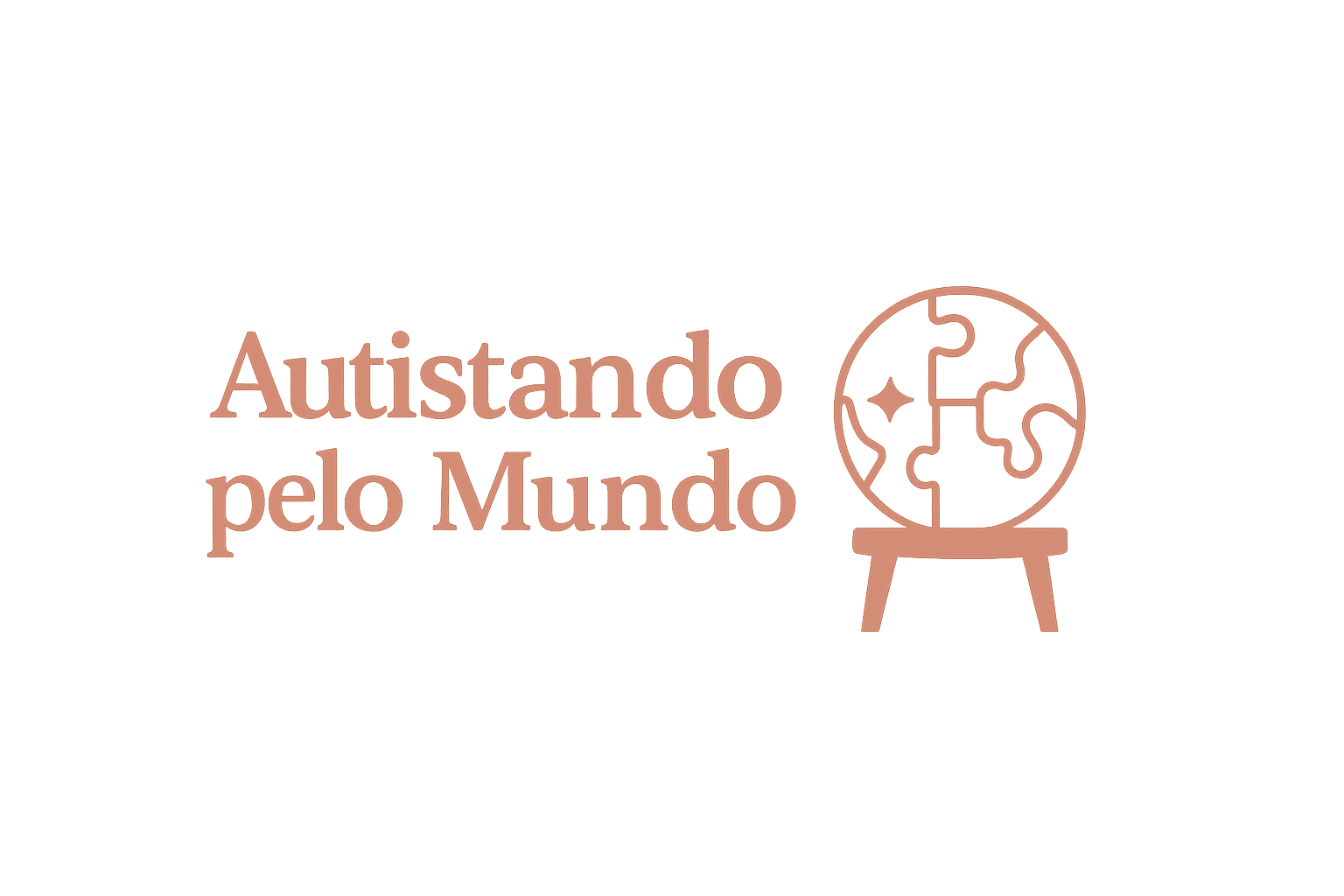💡 Technology and inclusion: how it transforms tourism for autistic people and people with disabilities
Updated by: Autistics Around the World •
Technology can be the bridge between "I really want to go" and "It was possible, it worked!" For families with autistic people and other people with disabilities, digital tools and good accessibility practices make travel more predictable, safe, and enjoyable. In this guide, we've gathered practical solutions — from accessible websites to sensory signage — that are already making a difference in parks, museums, restaurants, hotels and events.
1) Why technology matters for inclusion
Inclusion is not an “extra”: it is a right and improves everyone's experience. In Brazil, Brazilian Inclusion Law (LBI – Law 13.146/2015) establishes principles for accessibility. In practice, technology helps to:
- 📱 Inform in advance: preferential queue policies, maps, noise, lighting;
- 🧭 Guide during: signage, routes, break areas and sensory resources;
- 📝 Register later: feedback and data to continuously evolve.
2) Digital accessibility (WCAG) and online bookings
The visitor's first contact is the websiteIf it's not accessible, inclusion is already failing. Best practices according to the guidelines WCAG include:
- Adequate contrast; legible typography; clearly visible spacing and focus;
- Images with alternative text (alt) and labeled icons;
- Keyboard navigation; avoid focus traps;
- Clear forms, with understandable error messages;
- Information about preferential queue, policies for CIPTEA, loan of mufflers and rest areas.
When booking and booking tickets online, simple features help a lot: accessible chair/seat marked on the plan, fields for specific needs, confirmation by email/WhatsApp with arrival instructions and sensory map.
At Autistando pelo Mundo, we evaluate these points in our reviews. See a practical example in Circo Fantasy: accessibility & show.
3) Sensory resources and sensory comfort
For people sensitive to noise, light and crowds, technology makes it easier to control the environment:
- 🎧 Noise mufflers and headphones with active cancellation;
- 💡 Dimming lighting (reduce intensity at specific times);
- 🧘 Rest rooms/areas mapped on the app/website, with clear pictograms;
- 🔔 Alerts about noise/light peaks (e.g.: “globe of death” in circuses, fireworks in parks);
- 🗺️ Sensory maps that signal quieter areas.
4) Audio description, subtitles and Libras
Accessible multimedia content is essential:
- 🔊 Audio description for those with visual impairment;
- 💬 Subtitles (closed) for videos, including on screens and social networks;
- 🤟 Offer of Libras in tours and informative videos.
Even those who don't use these features on a daily basis can benefit from noisy environments. For managers, just start with most viewed videos and gradually expand.
5) Alternative Communication (CAA/AAC) and Queuing Support
THE Augmented and Alternative Communication (AAC) Includes boards with pictograms, apps with voice synthesis, and ready-made messages. In lines and ticket offices:
- 🧩 Display a poster with pictograms (entrance, payment, bathroom, priority queue);
- 💬 Make available ready-made phrases at the counter (e.g.: “I need preferential queue / CIPTEA”);
- 📱 QR Code to download a simple board on the visitor's cell phone.
This reduces stress, speeds up service, and avoids embarrassment. Especially in Brazil, remember that CIPTEA and preferential service must be respected.
6) Navigation in spaces: accessible maps, QR and AR
Clear guidance reduces anxiety and avoids unnecessary travel:
- 🗺️ Accessible maps with large icons, alternative routes and ramp identification;
- 🔎 QR Codes on totems to open high-contrast versions or with enlarged text;
- 🧭 Features augmented reality (AR) to point the way to PcD bathrooms, quiet rooms and exits;
- 📶 Beacons or indoor GPS signaling in large venues (museums, theme parks).
7) Barrier-free payments and tickets
Payment and ticketing technologies directly influence inclusion:
- 💳 Various payment methods (card, Pix, digital wallet);
- 📄 Issuance of digital ticket with accessibility data, preferential queue and contact;
- 🚪 Turnstiles/readings accessible for wheelchairs, strollers and companions;
- 👥 Option of companion and fields for “accessibility notes”.
8) Data, inclusive assessments and continuous improvement
Technology also means learning from dataMonitoring feedback on accessibility (queue times, bathroom cleanliness for people with disabilities, noise) helps plan improvements. Independent evaluations, such as those from Autistics Around the World, give real clues as to what works and what needs to evolve.
Tip for managers: create a post-visit form with 5–7 objective questions and one open-ended question for suggestions. Share results with the team and set quarterly goals.
9) How to prepare: checklist for families
- 🔎 Check the website: priority queue policies, map, schedules, noise.
- 🎟️ Secure your tickets in advance; if possible, select accessible seats.
- 🧩 Prepare your communication board (app or print) and agree on signs with the family.
- 🎧 Light earmuffs/headphones; confirm if there is a loan available at the location.
- 🧘 Map out rest areas; agree on “meeting points.”
- ⏱️ Arrive early to reduce stimuli and avoid long lines.
- 📲 Save contacts and site policies (printouts help offline).
10) Frequently asked questions
How do you know if a place is sensory friendly?
Search for sensory map On the website/app, describe lighting/noise and rest areas. Independent reviews are helpful.
Can I request a preferential queue with CIPTEA?
Yes. Take the CIPTEA and explain the need. Clear communication reduces conflicts and speeds access.
What apps can help?
Apps CAA/AAC, visual timers, offline maps, noise control, itineraries with stops and preparation lists are all useful.
What if the location doesn't have sensory resources?
Bring personal items (earmuffs, regulation toy), agree on pause signals, and ask for help at the entrance.
11) Conclusion & Next Steps
Technology does not replace human support, but multiplies inclusion When considered from the planning stage: accessible website, clear information, sensory resources, alternative communication, and intelligent signage. Families feel safe; teams work with more predictability; and the culture becomes more democratic.
If you're a manager, start with the basics (accessible website + useful information) and move on to sensory resources and maps. If you're a visitor, use this guide as a reference list and tell us about your experience.
✨ Also read our recent review: Circo Fantasy: accessibility & show .

📣 Share your inclusion experience!
Have you had a positive accessibility experience at a park, hotel, restaurant, or other location? Your story could help other families plan more inclusive trips.
Send your report and it may appear here on the website, in our section Reviews or General Tips!

Don't miss any tips!
Sign up and receive our inclusive tourism experiences directly to your email.
Want to make tourism more inclusive?
We are open to partnerships with accessible spaces, inclusive inns and projects that value diversity.
Get in touch and let's talk!
